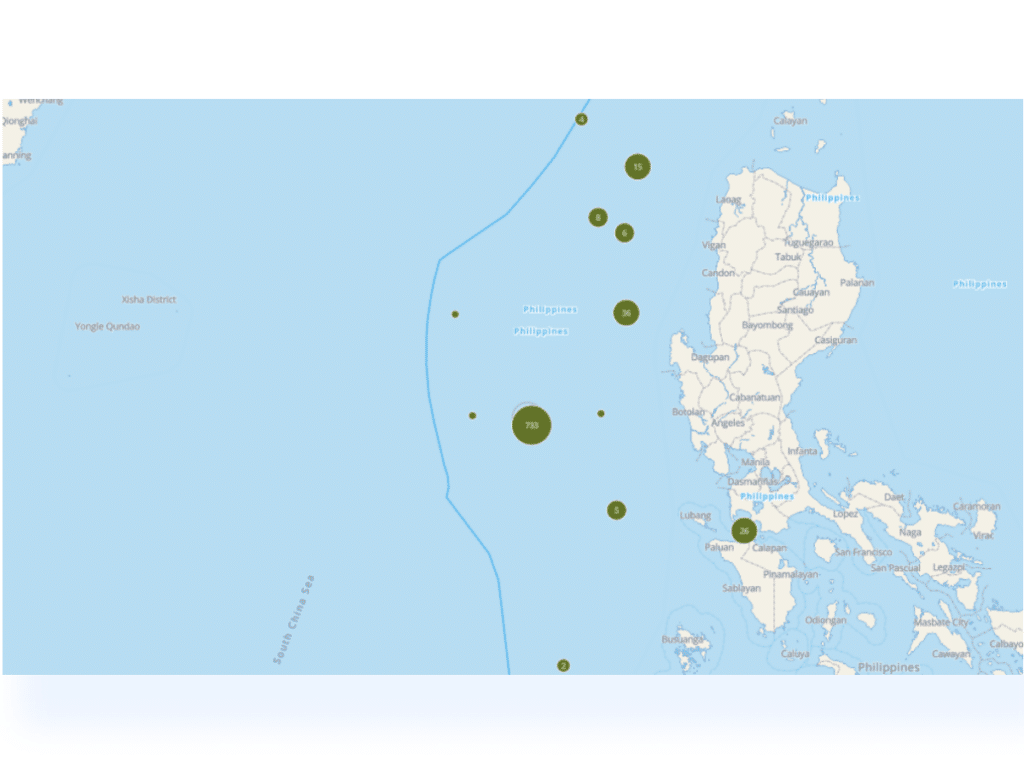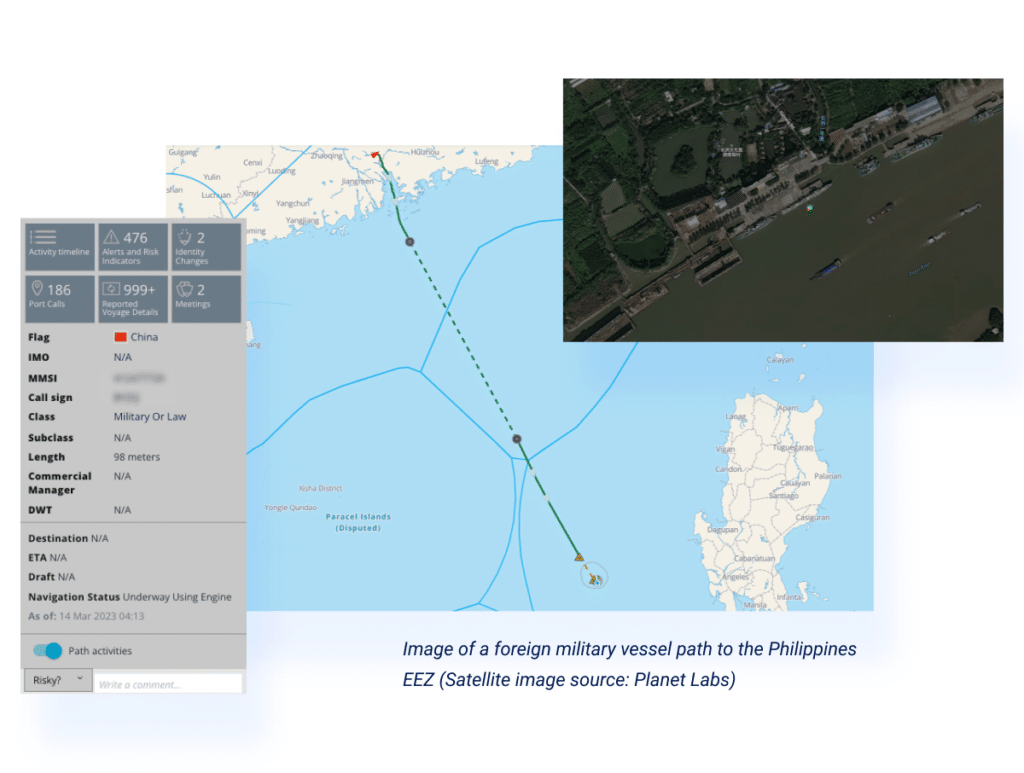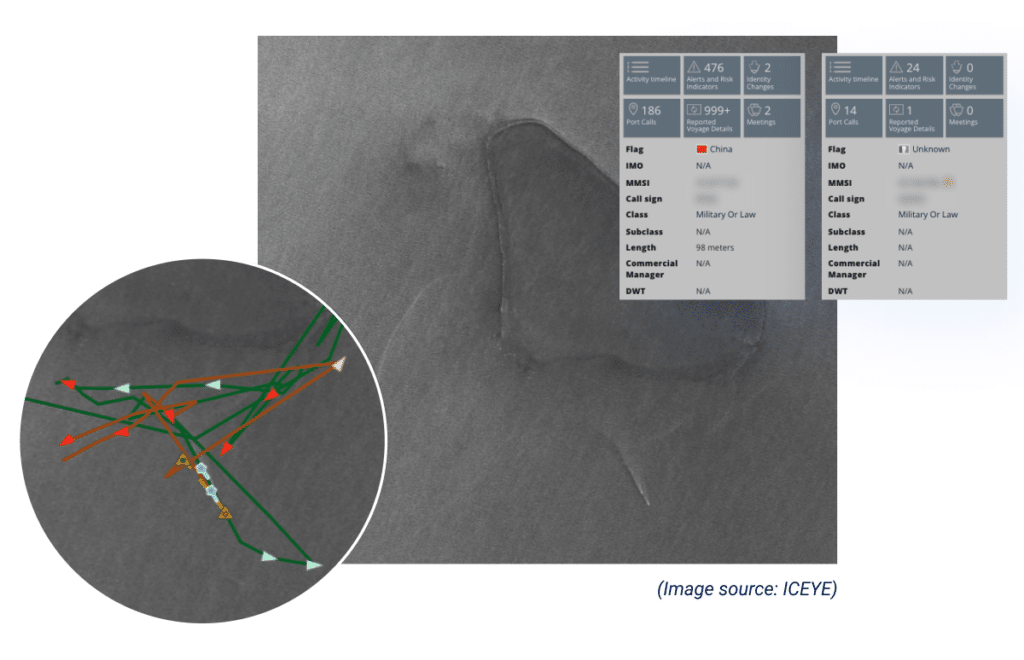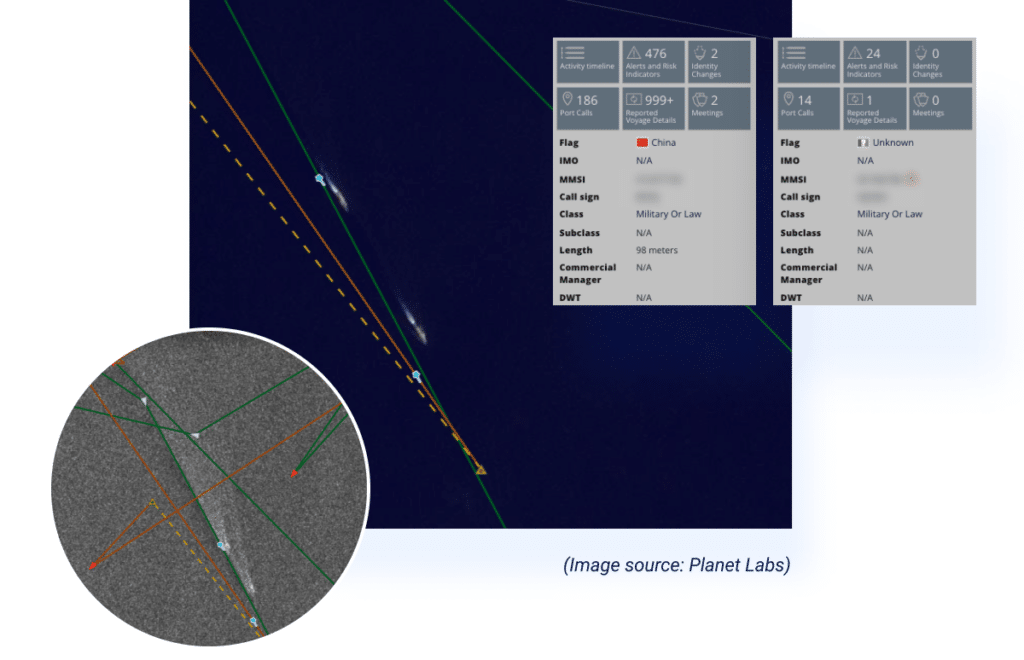Case Studies
Utilizing Tipping and Cueing for Enhanced Visibility
The maritime domain is one of the most complex and challenging operational environments. The vastness of the ocean makes it difficult to monitor and to know where and when to look for deceptive shipping practices (DSPs) and suspicious behavior. Globally, persistent monitoring and collection are impossible to scale with existing sensor deployment capabilities. No one approach or technology can serve as a single source of truth and capture the full picture of what is occurring at sea.

With the search results and the identified polygon for the tasking, the unit was still missing the trigger for the tasking (timing, behavioral).
Within the defined polygon, the unit investigated the operations of non-commercial vessels to discover the following sequence and timeline:
- Departure from China coast guard dock
- 2 days later – the vessels arrive at the area of patrol in the Philippines EEZ
- 1 day later – the replaced vessel departs from the area of patrol
By creating a custom polygon around the identified docks of interest, the unit customized alerts on triggers for tasking assets of importance, so as and not to miss a valuable opportunity.

With the identified location, trigger, and timing in hand, the unit tasked SAR imagery and got the below images proving the sequence they discovered in the data. However, without vessel details and context, it’s difficult to make sense of the image or use it in their investigation.

To leverage the SAR imagery further, the unit seamlessly integrated it into the Windward platform. Following this overlay with Windward AI’s fused identity layers, the actionable insights were highlighted to help drive the investigation deeper:

Windward’s agnostic multi-source AI platform also provides an additional optical imagery sensor source (Planet Labs), which corroborated the vessels’ location, and added context for the investigated operation.













